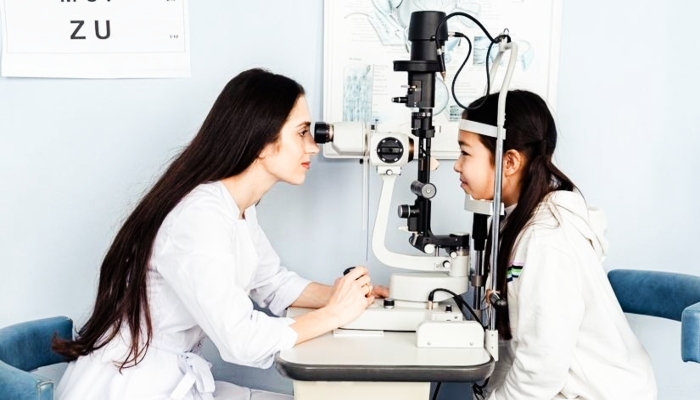New Delhi – A growing body of research warns that by 2050, nearly 40% of children globally could suffer from myopia (nearsightedness), with increasing screen time cited as a primary cause. In response, countries like Japan are implementing strict measures to limit daily screen exposure. Experts recommend increasing outdoor activities, reducing screen time, and scheduling regular eye check-ups to protect children’s vision.
Rising Myopia Among Children
A recent study published in the British Journal of Ophthalmology highlighted alarming trends. In 1990, about 24% of children worldwide had myopia; by 2023, this figure rose to 36%. Projections indicate that by 2050, approximately 740 million children and adolescents may experience difficulty seeing distant objects clearly, requiring corrective eyewear.
The report analyzed data from 276 studies spanning 50 countries across Europe, the Americas, Asia, Africa, and Oceania, covering over five million children, of whom around two million were diagnosed with myopia. Japanese studies conducted between July and August 2025 revealed that 77% of children aged 6–11 and 95% aged 12–14 already suffer from myopia, primarily due to reduced outdoor play and increased use of digital devices.
Global Health Concerns
Experts note that every additional hour of screen time daily increases the risk of myopia in children by 21%. Reduced outdoor activity and prolonged exposure to screens can also affect sleep, mental alertness, and physical activity, further exacerbating the problem.

Parental Guidance Essential
Researchers and Japanese authorities urge parents to monitor screen usage closely. Children should spend at least two hours daily outdoors, with limited access to smartphones, computers, or tablets. Regular eye examinations and educating children about the importance of eye health are also critical steps to prevent vision problems.
Japan’s Toyoake City has already implemented a local ordinance restricting non-essential screen usage to just two hours daily, a measure aimed at protecting both children and adults from the long-term effects of digital overexposure.
With myopia on the rise, global health authorities stress that early intervention, lifestyle adjustments, and awareness are key to safeguarding the eyesight of the next generation.






